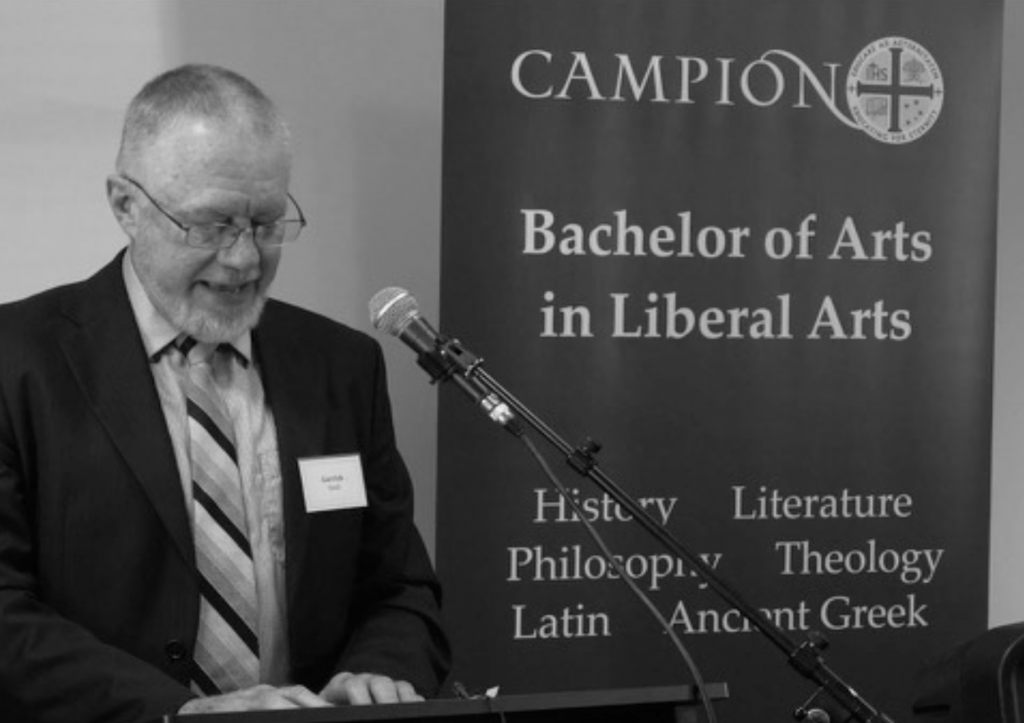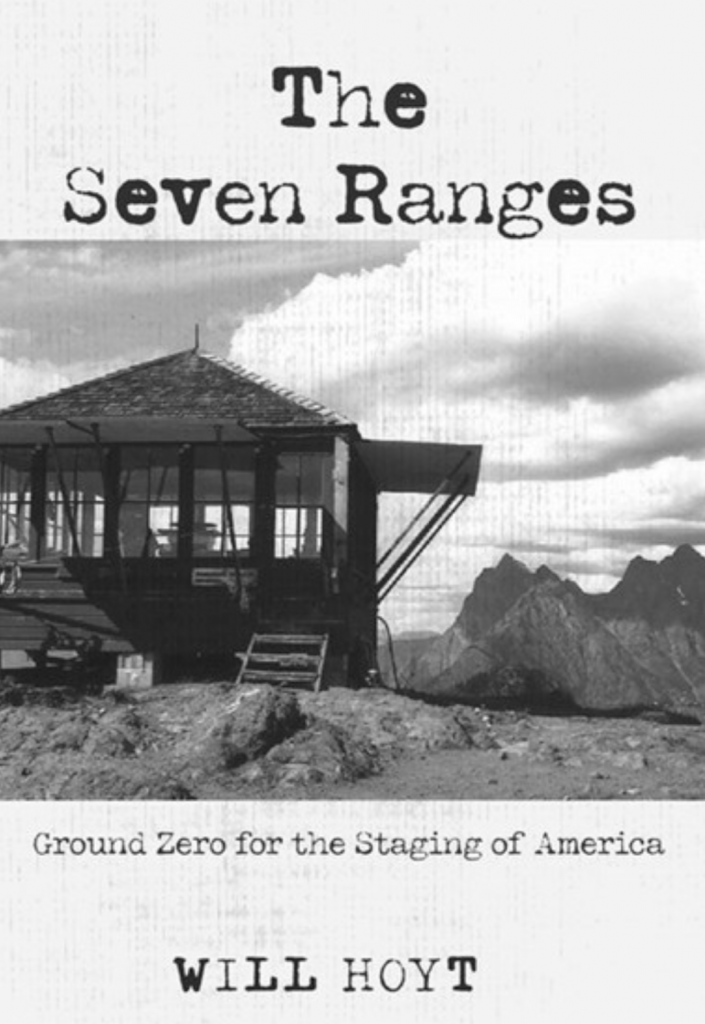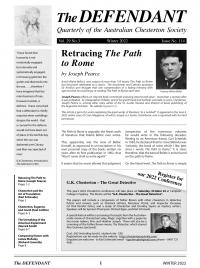Will Hoyt’s The Seven Ranges: Ground Zero for the Staging of America is a publication of Front Porch Republic, an American blog whose social philosophy is in tune with Chesterton’s Distributism in emphasising family and local community ideals and the need for power in society to be broadly distributed.
Garrick Small finds Hoyt’s book a rewarding read. Garrick’s most recent
contribution to The Defendant (Spring 2021) was on the Front Porch Republic journal, Local Culture. A property economist, he has experience teaching at several universities and has spoken at Australian Chesterton conferences.

The “American Experiment” is an alien or even offensive notion outside of the USA, but it should not be ignored by anyone interested in civilisation and its direction.
Like it or not, the USA has served as the application of those ideas of society and polity distilled through that epoch of Western thought known by its supporters as the “Enlightenment”. The result was a genuine experiment and to some extent we are all now part of it.
In 1922 Chesterton implicitly commented on the experiment in What I Saw in America when he noted:
“The world cannot keep its own ideals. The secular order cannot make secure any one of its noble and natural conceptions of secular perfection.”
What I Saw in America, GK Chesterton, 1922
Will Hoyt has provided an updated and detailed assessment that confirms Chesterton’s conclusions without hardly mentioning his name.
Experiments are only partly thought-out things. They are risky tests of risky theories. Hoyt has evaluated the American experiment from the point of view of an observer of that part of the US mid-west sometimes called the “rust belt”.
Having moved from an urban centre in California to a farm in Ohio, he presents his observations by immersing his reader in a journey that reads something like William Cobbett’s Rural Rides, or perhaps Persig’s Zen and the Art of Motorcycle Maintenance.

Cobbett rode through the England he loved and noted features, such as manor houses, that according to the history he had been taught should not exist. Persig used a motorcycle ride to explore philosophical ideas that he had been taught should not exist. Hoyt rode a river barge along the Ohio River to Steubenville to make sense of the changes to that core region of farming land, called the Seven Ranges, which now stands in dismal contrast to what the designers of America predicted should exist.
Hoyt found rust, soot and unemployment in towns where bounty was supposed to be. The countryside about it is similar. Hoyt explains how the land to the west of the Ohio River was once a prosperous farming region, but that changed when coal mining rose to dominance about a century ago and the mining process began by stripping off the topsoil and farms.
The land was mined out after about sixty years, and what is left is jagged and infertile. Areas that were flourishing farming communities in 1920 are now ragged and poisonous.
Fortunately, Hoyt goes a lot further than merely chanting the ecological slogans that usually accompany such observations, the ones usually set to socialist tunes. Instead, he acknowledges the irresponsibility behind these developments, while being careful to note that the socialist interpretation is as toxic as the ideology that produced the problem itself.
In this way he mirrors Chesterton’s observations in What’s Wrong with the World that both big business and big government are the twin enemies of the ordinary man.
Hoyt uses these twin enemies to develop his notion of false polarities. He sets out an array of associated false polarities which he explains are actually alternate expressions of the same error. His false polarities are cases where an accepted error ends up expressing itself as one of two apparently opposing views, but both share some opposition to goodness, truth or beauty.
For Hoyt these false polarities entered the American mind with the mid-19th century civil war. In this, Hoyt argues a subtle but extremely important point. He begins by noting that the North can be viewed as pushing industrial capitalism, while the South could be interpreted as representing something akin to the medieval sense of social connectedness, including land ownership connected with social obligation.
However, he examines just how akin the South was to this pre-modern approach, and finds it was actually a corruption. The result was two armies fighting each other over which corruption of the medieval social order would dominate in America.
He expands this to reflect on the abuse of the word “freedom” and explores in detail the political and economic history that has given us the American rust belt of today. His final conclusion is that America had the opportunity to develop itself in ways modelled on medieval Christendom, but avarice and the false polarities that arise from modern thought scuttled the project.
There is a malign symmetry in what Hoyt is proposing. Mostofhisbookisaverydetailedanalysisofthevarious historical tensions that have formed the USA of today. He demonstrates how supporters of each side of these tensions could accurately point to flaws in their opponents, while blind to the failings in their own team. He explores the messianic dimension of America as a “city on a hill” and how that false self-confidence is dangerous.
Faith and Social Order
The book concludes by noting that the social order of the old Faith is the only solution, but in a way that leaves the reader unsure of Hoyt’s religious affinities right up the last few pages. However, he ties a tight knot about the persuasiveness of his conclusion that does not allow his reader to dismiss his argument as merely the work of a biased traditionally minded Catholic. He demonstrates that the traditional faith is the only one capable of supporting a sustainable social order.
Hoyt offers an abundance of material in support of his conclusions which cannot be covered here. It is rewarding reading for anyone interested in understanding the failure of the American Experiment and vindication of Chesterton.
Recovering the American Experiment

There is no basis for democracy except in a dogma about the divine origin of man. . . . Every other basis is a sort of sentimental confusion, full of merely verbal echoes of the older creeds. Those verbal associations are always vain for the vital purpose of constraining the tyrant. . . .
[T]he modern world of moods is a world of clouds, even if some of them are thunder- clouds.. . . Eighteenth-century ideals, formulated in eighteenth-century language, have no longer in themselves the power to hold all those pagan passions back.
G.K. Chesterton, What I Saw in America (1922)
